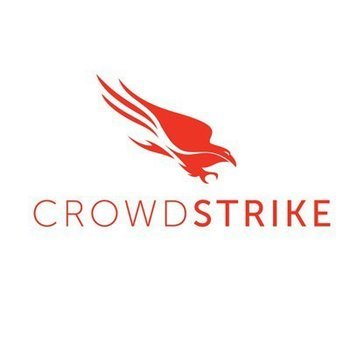CrowdStrike and Data Soap integration
Save yourself the work of writing custom integrations for CrowdStrike and Data Soap and use n8n instead. Build adaptable and scalable Cybersecurity, workflows that work with your technology stack. All within a building experience you will love.


How to connect CrowdStrike and Data Soap
Create a new workflow and add the first step
In n8n, click the "Add workflow" button in the Workflows tab to create a new workflow. Add the starting point – a trigger on when your workflow should run: an app event, a schedule, a webhook call, another workflow, an AI chat, or a manual trigger. Sometimes, the HTTP Request node might already serve as your starting point.
Build your own CrowdStrike and Data Soap integration
Create custom CrowdStrike and Data Soap workflows by choosing triggers and actions. Nodes come with global operations and settings, as well as app-specific parameters that can be configured. You can also use the HTTP Request node to query data from any app or service with a REST API.
Supported API Endpoints for CrowdStrike
GetDeviceDetails
Retrieve device details for a specific host.
QueryDevicesByFilter
Query devices by filter.
PerformDeviceAction
Perform a device action such as 'Contain' or 'Lift Containment'.
GetDeviceSnapshots
Get snapshots of device status.
GetDeviceDetailsById
Retrieve device details for a specific host by device ID.
GetAlerts
Retrieve a list of alerts.
GetAlertDetails
Retrieve details of a specific alert.
AcknowledgeAlert
Acknowledge a specific alert.
UpdateAlert
Update details of a specific alert.
DeleteAlert
Delete a specific alert.
QueryDetections
Retrieve detections based on provided query parameters.
GetDetectionDetails
Retrieve details for a specific detection.
UpdateDetection
Update details of a specific detection.
AcknowledgeDetection
Acknowledge a specific detection.
DeleteDetection
Delete a specific detection.
GetUsers
Retrieve a list of users.
GetUserDetails
Retrieve details of a specific user.
CreateUser
Create a new user.
UpdateUser
Update details of a specific user.
DeleteUser
Delete a specific user.
To set up CrowdStrike integration, add the HTTP Request node to your workflow canvas and authenticate it using a predefined credential type. This allows you to perform custom operations, without additional authentication setup. The HTTP Request node makes custom API calls to CrowdStrike to query the data you need using the URLs you provide.
Take a look at the CrowdStrike official documentation to get a full list of all API endpoints
Supported API Endpoints for Data Soap
List validation
Performs lookups for various validation checks like HLR and Landline.
Perform validation checks
Run validation checks on a given lookup.
Lookup TPS
Retrieve the Telephone Preference Service status for a given phone number.
Get TPS information
Retrieve information on whether a phone number is registered with the Telephone Preference Service.
Lookup HLR
Retrieve the Home Location Register status for a given mobile number.
Get HLR information
Retrieve information about a mobile phone number's status.
Lookup MPS
Check if an address is present on the Mail Preference Service.
Lookup Landline
Check whether a given landline number is active.
Get Landline status
Check if a landline number is active.
Lookup Email
Verify the quality and status of a given email address.
Create unsubscribe
Unsubscribes a phone number from the notification list.
Check Unsubscribe status
Determine if a phone number is on the unsubscribe list.
Check authorization
A simple check to see if your Authorization Token is working.
Enquire balance
Check your available balance of lookups for different product types.
Create batch
Start a new batch of lookups through the batch system.
Get job result
Get the result of a job, displaying the current status if not complete.
List jobs
Retrieve a list of jobs processed through the batch API.
Send message
Queues a single message to be sent and returns an ID for tracking.
Check status
Retrieves the current status of a message using its ID.
List sent messages
Provides a list of all the sent messages with pagination options.
List received messages
Provides a list of all the received messages with pagination options.
Create validation lookup
Submit a validation request using the asynchronous API.
To set up Data Soap integration, add the HTTP Request node to your workflow canvas and authenticate it using a generic authentication method. The HTTP Request node makes custom API calls to Data Soap to query the data you need using the API endpoint URLs you provide.
See the example hereThese API endpoints were generated using n8n
n8n AI workflow transforms web scraping into an intelligent, AI-powered knowledge extraction system that uses vector embeddings to semantically analyze, chunk, store, and retrieve the most relevant API documentation from web pages. Remember to check the Data Soap official documentation to get a full list of all API endpoints and verify the scraped ones!
CrowdStrike and Data Soap integration details
The SOAR platform you want
Mountains of monotonous tasks make building and monitoring your workflows a chore. Not anymore.
Learn more
Save engineering resources
Reduce time spent on customer integrations, engineer faster POCs, keep your customer-specific functionality separate from product all without having to code.
Learn more
FAQ
Can CrowdStrike connect with Data Soap?
Can I use CrowdStrike’s API with n8n?
Can I use Data Soap’s API with n8n?
Is n8n secure for integrating CrowdStrike and Data Soap?
How to get started with CrowdStrike and Data Soap integration in n8n.io?
Looking to integrate CrowdStrike and Data Soap in your company?
The world's most popular workflow automation platform for technical teams including
Why use n8n to integrate CrowdStrike with Data Soap
Build complex workflows, really fast


